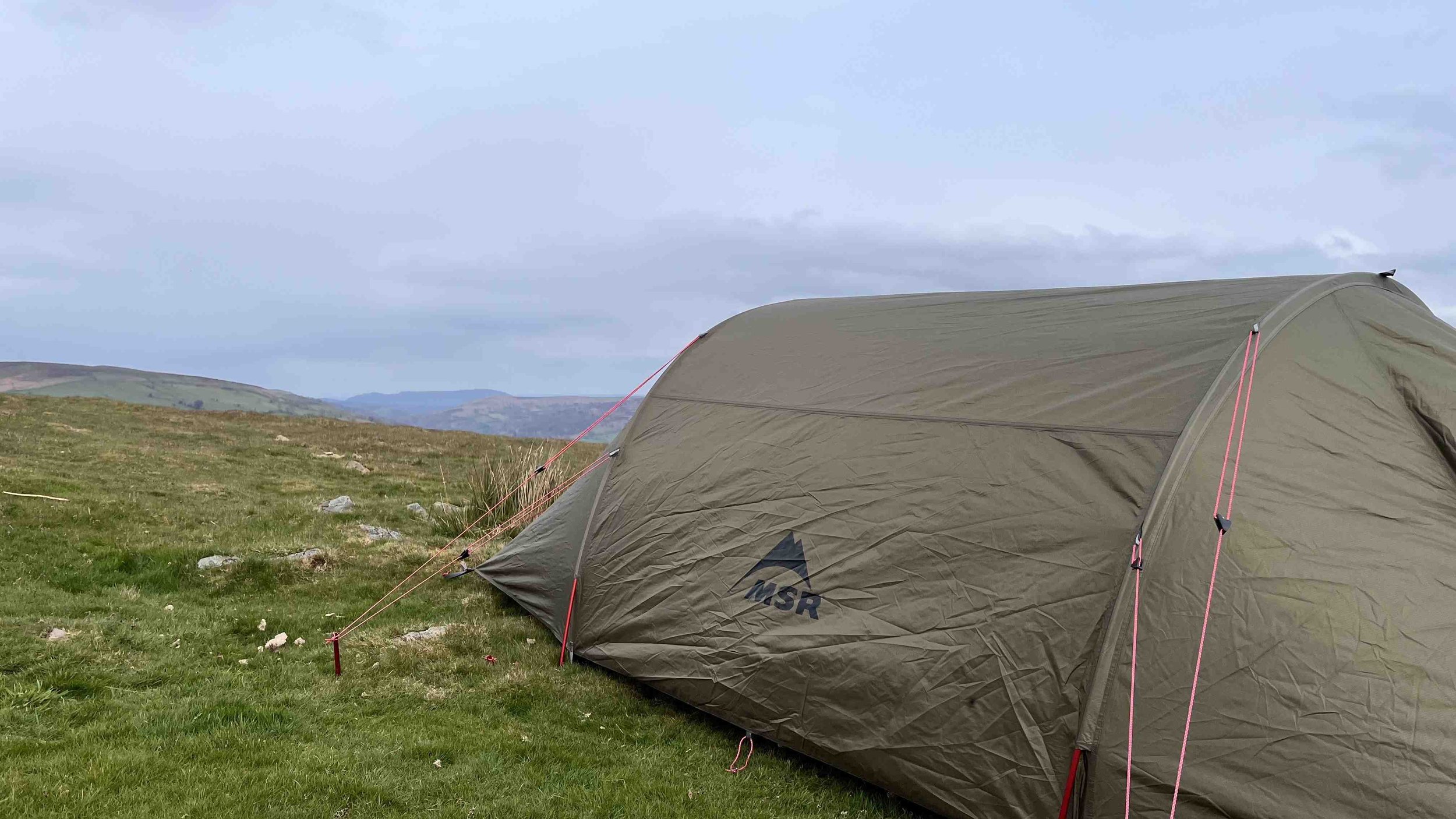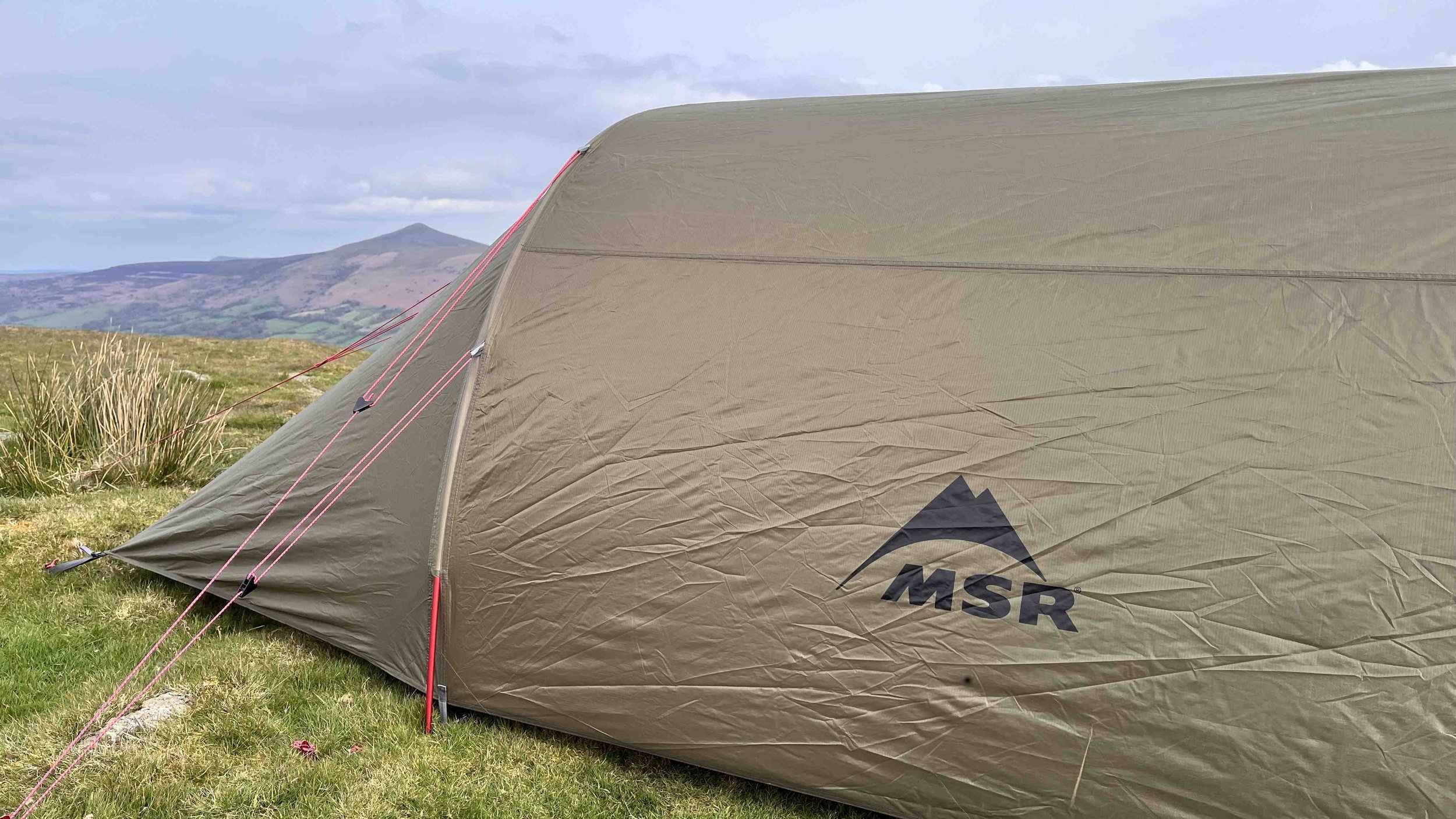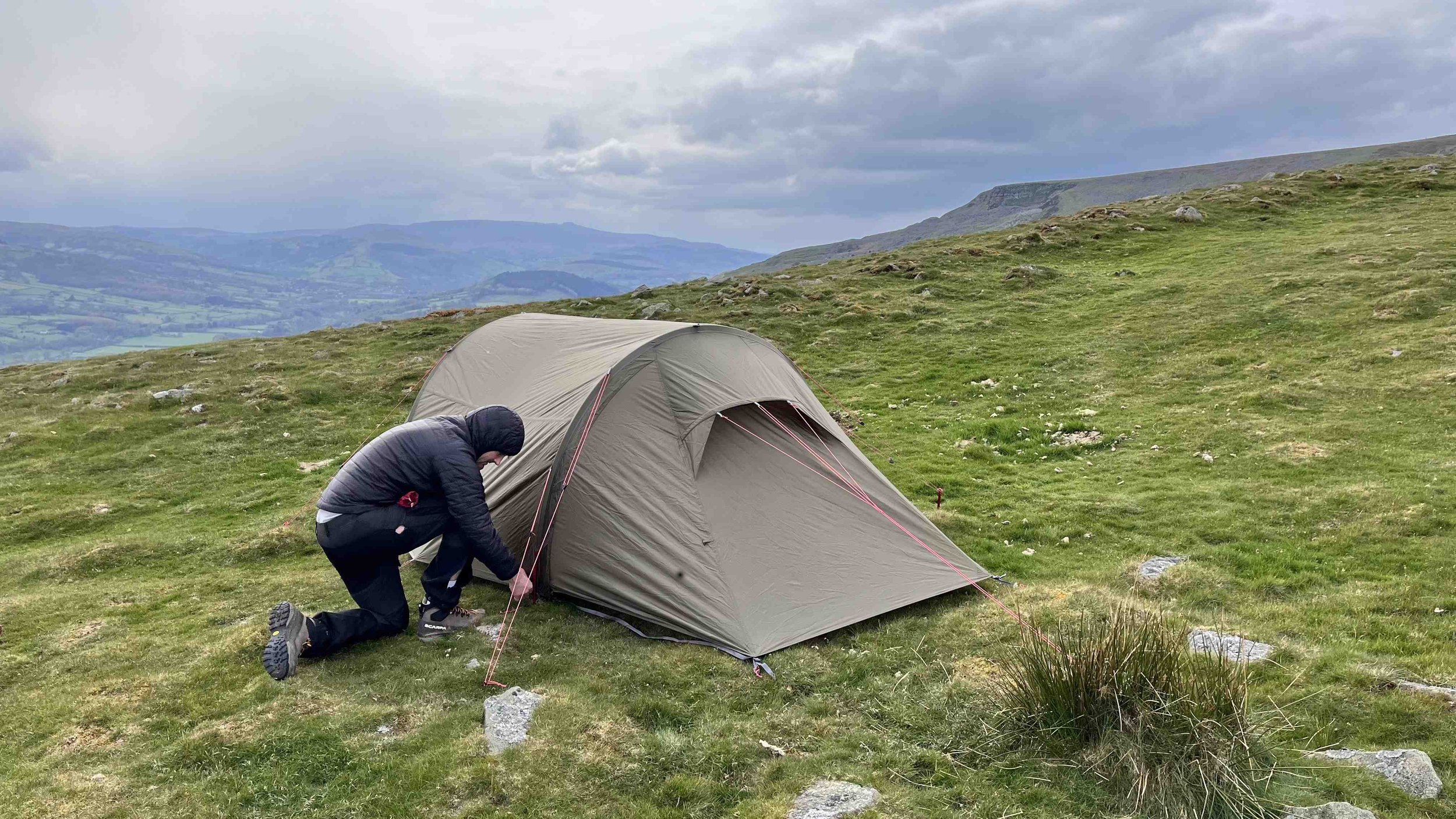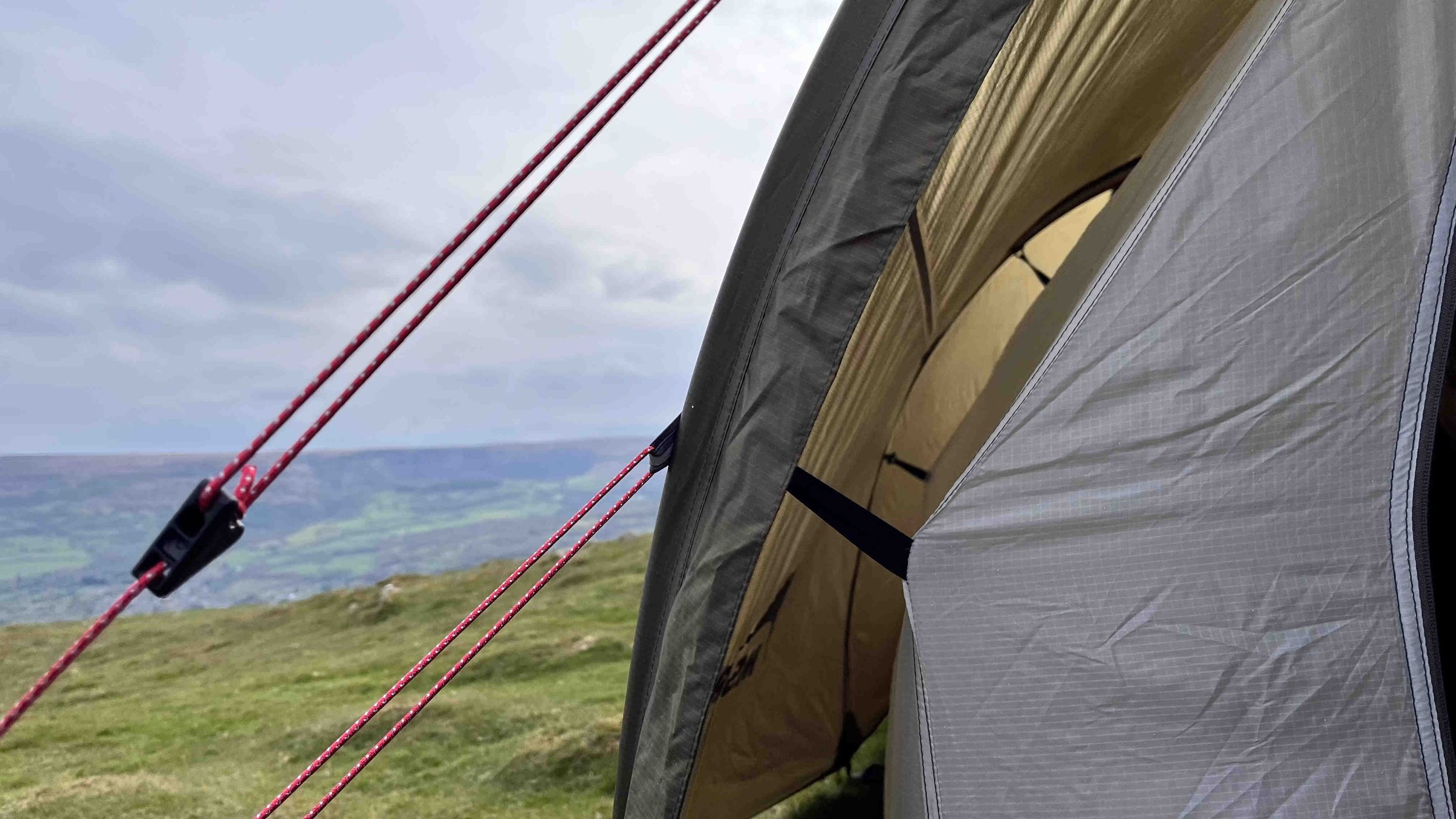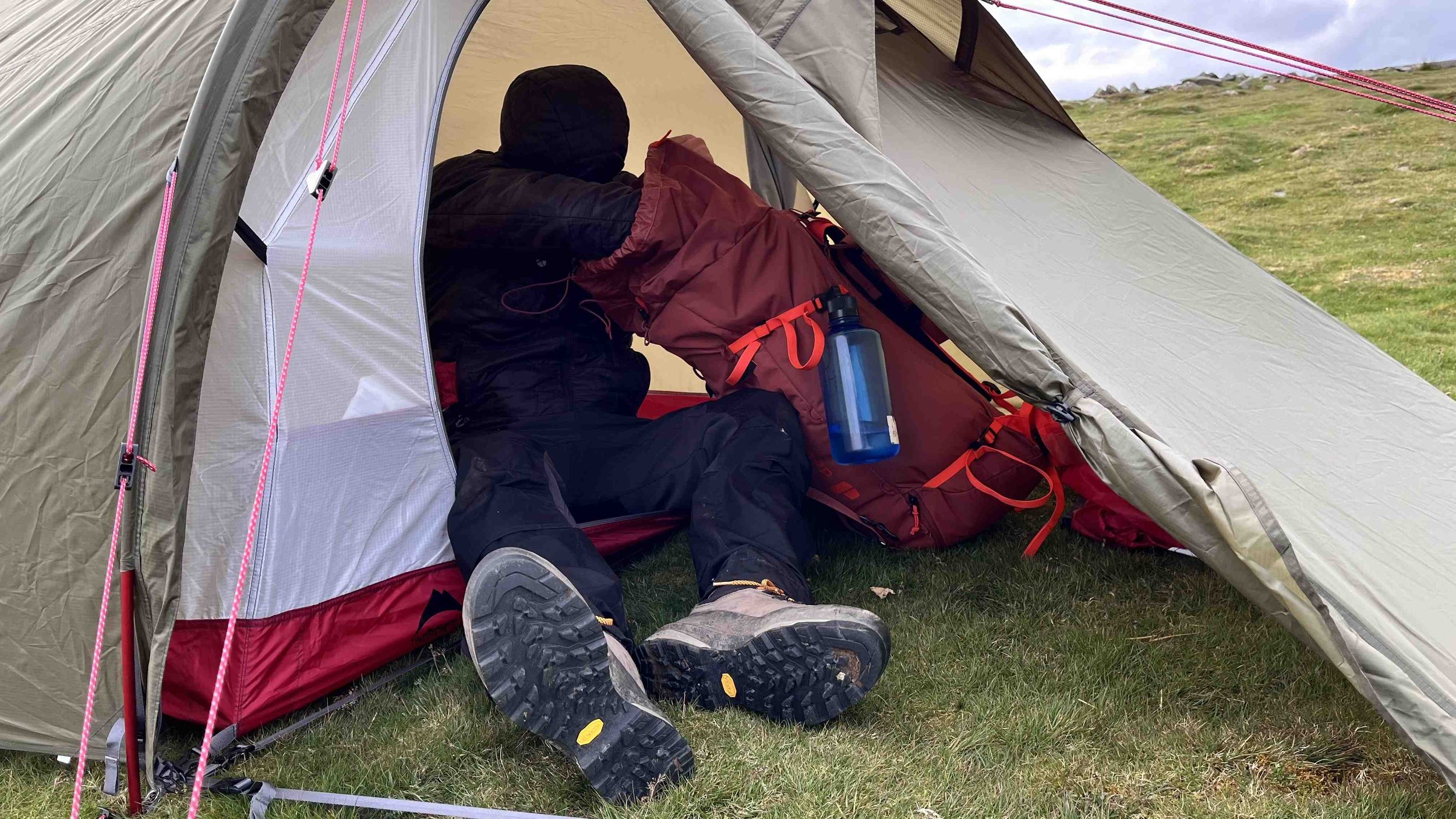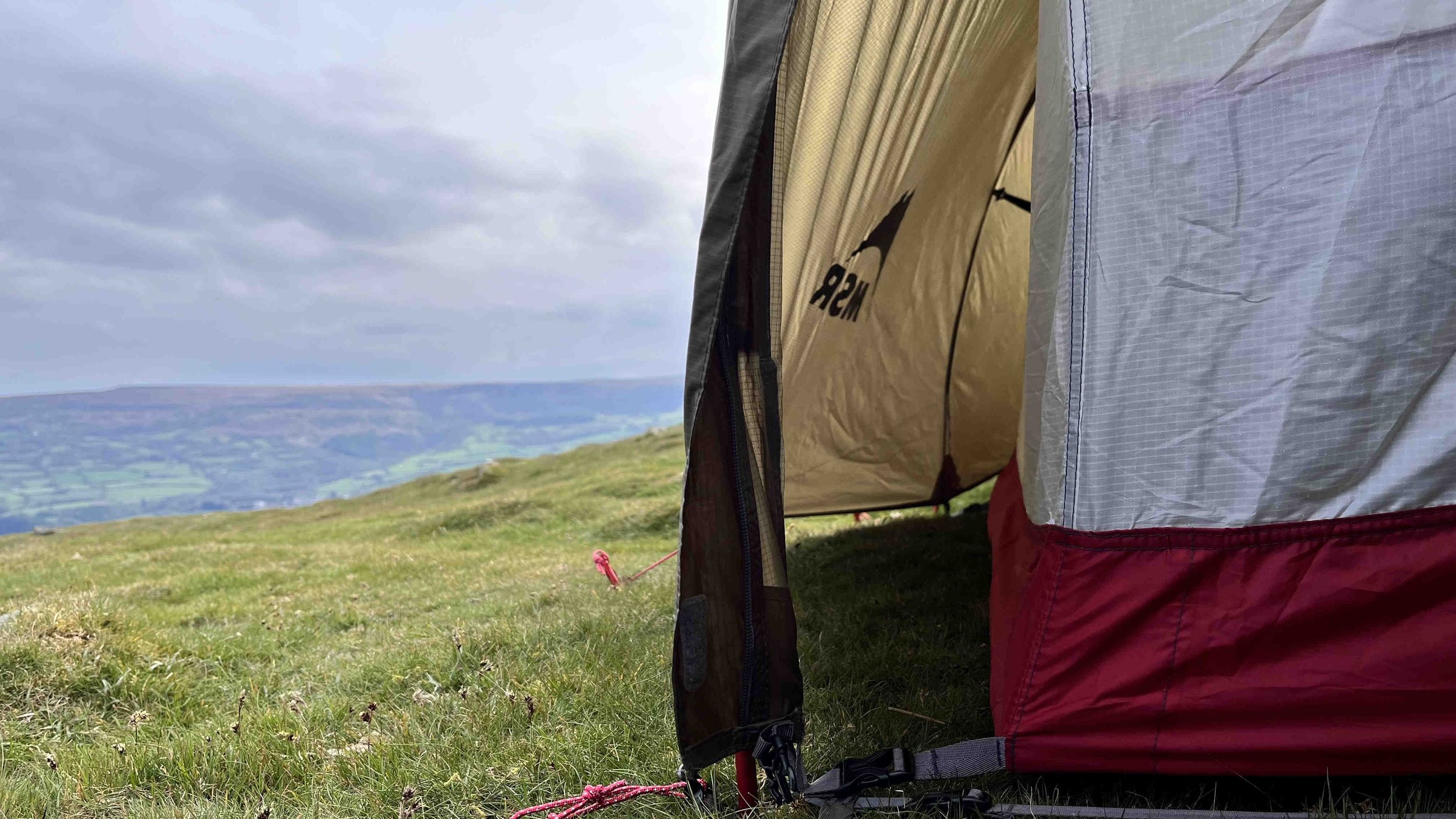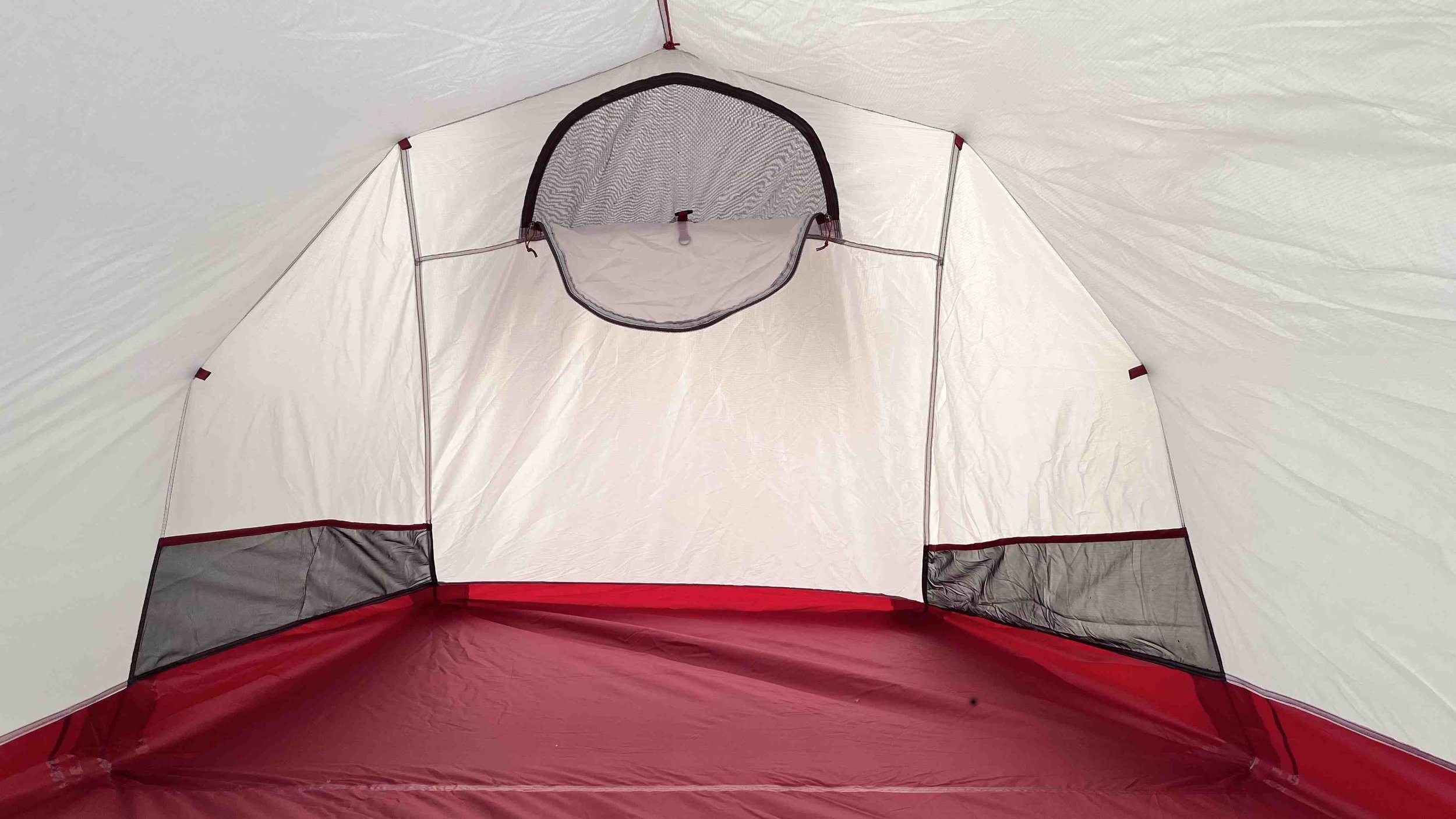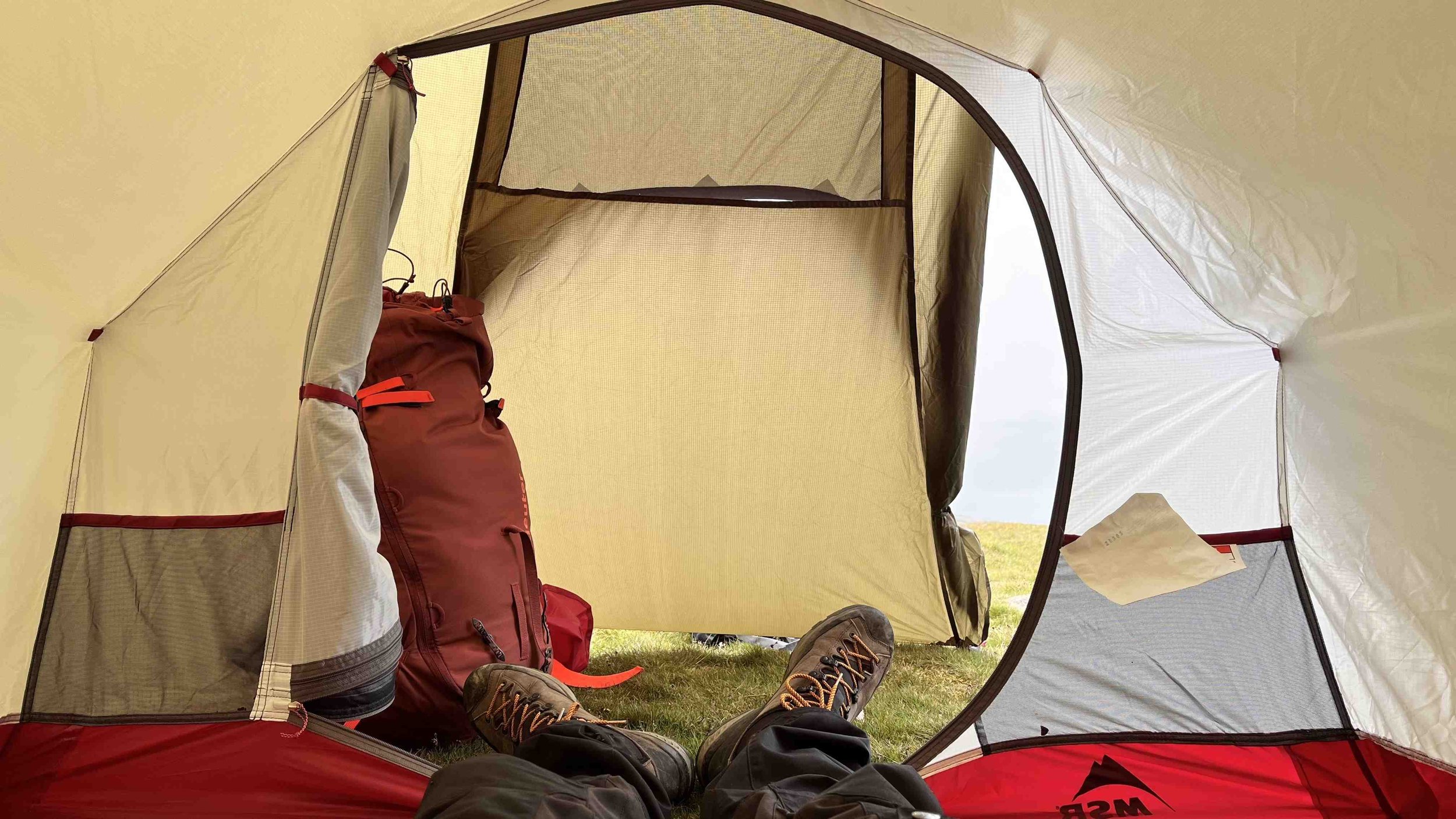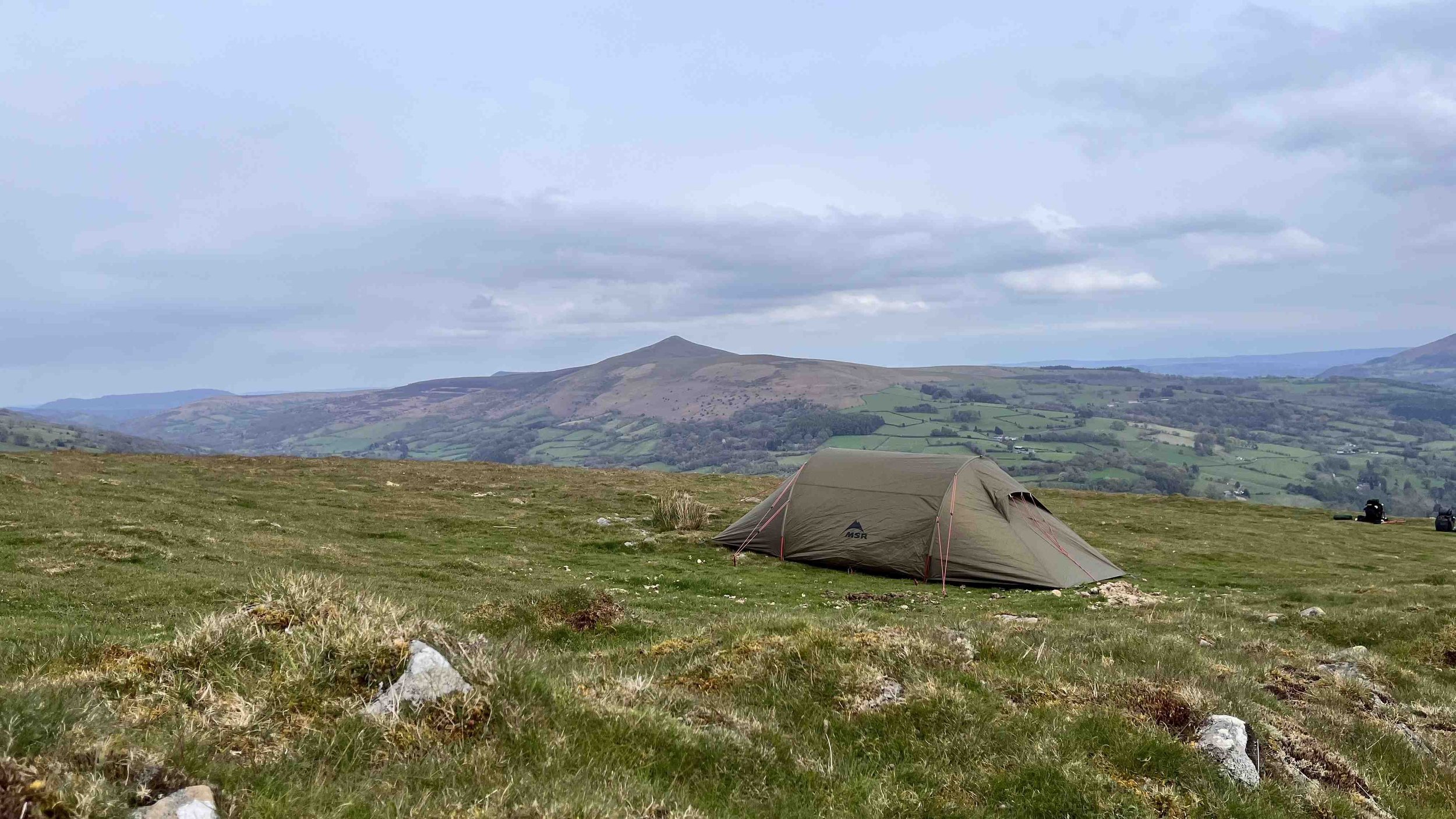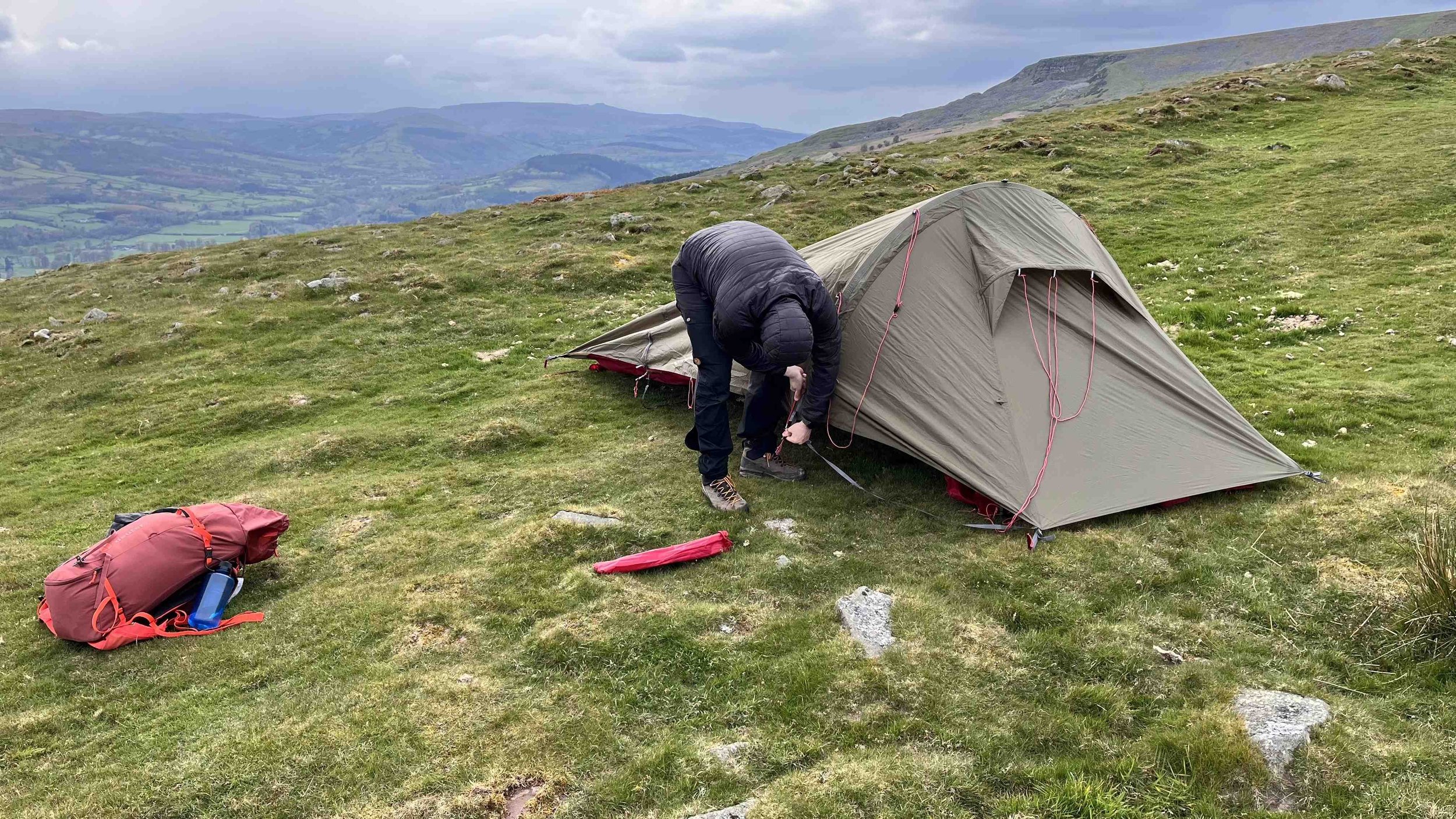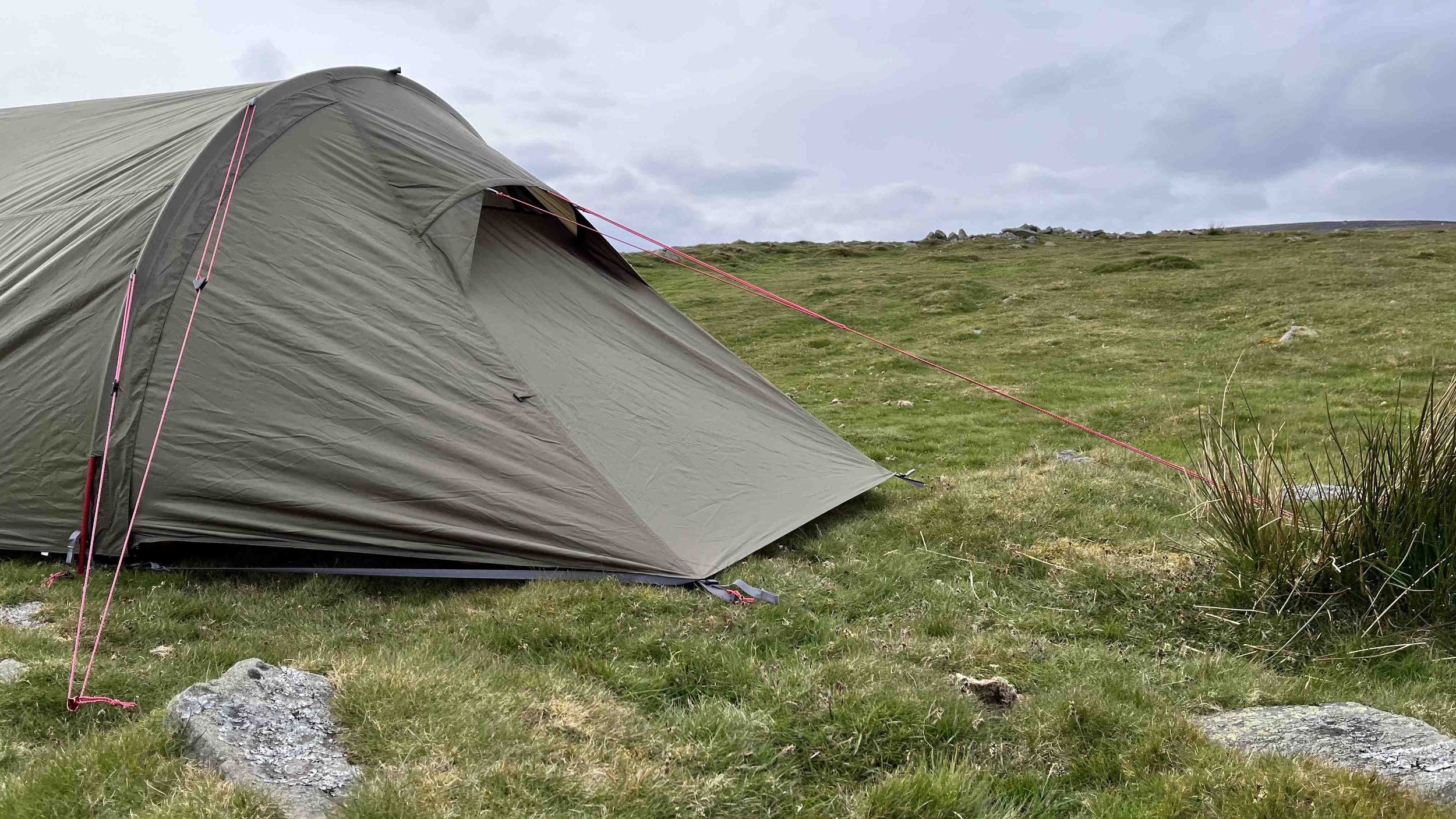MSR Tindheim 2 review: a proper palace for rougher nights in the hills
Super simple to pitch and offering some of the most generous internal space of any tent we’ve ever tested, the MSR Tindheim 2 sets a new benchmark for those who prioritise reliability and comfort over weight and pack size.
MSR Tindheim 2
The MSR Tindheim 2 is a robust, three-to-four-season, two-person tunnel tent built for adventurers seeking reliability and comfort. At 2.9 kg, it’s not the lightest, but its durability and spacious interior make up for the weight – delivering more space than practically any other tent we’ve ever tested. For added versatility, this tent also comes with a cavernous vestibule, a ton of pockets and – perhaps most impressively of all – a tunnel-style design that performs incredibly well in an enormous range of UK conditions.
Ideal for: People wanting a sturdy tent and bit more space for a roomier camp
Not suitable for: Fastpacking, ultra light trips, anything where pack size is important
The Good
Amazing performance in UK conditions
Incredibly roomy, even for two
Beautiful design for photographing on the hill
Easy to pitch and pack away
The Bad
Larger than average pack size and weight
MSR Tindheim 2 Review
When it comes to outdoor gear, few names command as much respect as MSR (Mountain Safety Research). Known for its commitment to quality and innovation, MSR has carved a reputation as one of the go-to brands for British backpackers who demand reliability in the harshest conditions. And the MSR Tindheim 2 is no different: Praised for its rugged build and spacious interior, this tent has become a favourite among outdoor enthusiasts looking for a balance between comfort and durability.
The MSR Tindheim 2 is a three-season, two-person tunnel tent designed for adventurers who value both functionality and comfort. Weighing in at 2.9 kg, it is certainly not the lightest tent in its class, but its weight is justified by its robust materials and generous living space. The packed dimensions are 56 x 20 cm, making it compact enough to fit into most backpacks without a struggle, though it’s certainly more comfortable when carried between two packs. Built to excel in challenging conditions, the Tindheim 2 is a versatile choice for weekend getaways, extended treks, and even shoulder-season adventures.
One of the standout features of the Tindheim 2 is its large vestibule, which provides ample space for gear storage, cooking, or simply sheltering from the elements. For added reliability in harsh weather, it also comes with a super rugged 68D ripstop polyester flysheet which instils confidence in you the minute you put this tent up — all while the cavernous interior is wrapped in a high-quality polyester mesh to maximise ventilation while keeping the creepy crawlies out.
In terms of price, the Tindheim 2 sits at the premium end of the spectrum, with an RRP of around £400. This puts it in direct competition with other high-performance models like the Big Agnes Copper Spur HV UL2 and the Hilleberg Anjan 2. While it may not be the cheapest option, the combination of space, durability, and thoughtful design makes it a worthy investment for those who demand quality from their gear.
Our experience using the MSR Tinhdeim 1
To truly understand the capabilities of the MSR Tindheim 2, we took this tent out on a series of demanding adventures through all 4 seasons of 2024. All in, we were able to put it up against brutal and unrelenting winds on Dartmoor in winter, driving rain and beating wind on top of Crug Hywel in Bannau Brycheiniog National Park in spring, a handful of group camps in still conditions through the summer, and a sub-zero long-distance backpacking trip back on Dartmoor towards the end of the year. And you know what? This tent killed it every time, consistently delivering a comfortable and reliable space for us to get our heads down after a long day on the trails. Which, to be honest, is not necessarily in line with our first impressions.
You see, when we first got our hands on a Tindheim 2 way back at the end of 2023, we were a little confused. By this point, the tent had picked up numerous rewards and had received huge praise in our circles, so we were really expecting something game-changing. When it turned up, however, we were instead confronted with a standard-style tunnel tent — only one that was way thicker, way heavier and way larger than we were expecting. “What’s the big deal?” we thought. Well, as it turns out, this commitment to sticking to tech that works is exactly what makes the Tindheim 2 such a standout shelter. Everything about it is considered, with every inch of this shelter having been made to deliver confidence and reliability over bells and whistles. And you know what? Despite that feeling like a bit of a letdown initially, confidence and reliability are all that counts when you’re out on the hill.
So what is it about the Tindheim that makes it so good? Well, to start, there’s the space. Seriously, this thing is like Aladdin’s cave. From the outside, it looks like any other tent, but from the inside, you could be convinced that you’re actually in a circus tent it’s that big. At its widest, the Tindheim is 1.4 metres wide, which makes it about as wide as a standard double mattress. But with an internal length of 2.4 metres, you could comfortably sleep next to Shaquille O'Neal in the Tindheim and not feel cramped. That puts it up there with the Nortent Vern 2 as one of the most cavernous two-person tents on the market then: perfect for whiling away long winter nights.
But that’s not all. The Tindheim 2 also excels in other areas that matter most to backpackers when hunkering down in the great outdoors. First of all, there’s the pitch, which is incredibly easy to do despite the size of this thing. To get it set up, all you’ve got to do is roll out the tent on the ground, insert the tunnel poles at either end of the tent, and peg out the corners. For added strength, you can peg out as many of the 6 extra guy lines as necessary. Amazingly, to do so (including all of the guy lines), you only need 16 pegs, and the result is astoundingly strong. Even when camped out in winds well over 30 mph, the Tindheim 2 just rolls with the punches, barely buckling and surprisingly remarkably quiet throughout.
What’s more, packing this tent away in the morning is decidedly simple. You just remove both poles, pull out the pegs and roll it all together. The whole thing then fits conveniently back into the oversized stuff sack, ready for popping back into the bottom of your pack and carrying off the hill.
Another thing that grew on us the more we used this tent was the 68D ripstop polyester flysheet. You see, in a world of Cuban fibre and silnylon, polyester just feels cheap — especially for a backpacking tent. It’s tougher, rougher and doesn’t pack down as well. And it happens to be a whole lot heavier, too. And on a tent that costs nearly £400, you don’t expect to be greeted with materials that feel anything less than ultra-top-of-the-line. But polyester does have some advantages: Unlike silynylon, polyester flysheets are 100% waterproof, repelling every drop that lands on its surface. This means that they don’t sag in the same way silnylon fly sheets tend to, nor do they wobble as much in the wind. During numerous nights out in disgustingly heavy rain, it was for these exact reasons that we grew to love the durability — and really appreciated MSR’s decisions to eschew fancy silnylon in favour of ever-reliable polyester for the flysheet.
Pack size and weight
While the Tindheim 2 has many strengths, its pack size and weight is worth noting, however. At 56 x 20 cm and weighing 2.9 kg, it’s on the larger side for a three-season tent. When you share the load between two, however, we never found this to be a major drawback during any of our testing, even on trips where we covered up to 20 miles in a single day. But if your priority is ultralight backpacking, this tent might not be the best fit. For trips where extra space and protection are more important, we think you’d be hard-pressed to find something better out there right now — and we consider its slightly bulkier pack size to be a fair trade-off for the added comfort and resilience it provides.
Using the Tindheim in 4-season UK conditions
One thing that we found ourselves coming back to throughout testing was MSR’s insistence on this tent being considered 3-season. Granted, the flysheet doesn’t come all the way to the ground, and the interior comprises a lot of mesh. But for the UK, we’d argue that this checks a lot of 4-season boxes, more than some tents that market themselves as 4-season, in fact. Based on our experiences in it over the last 12 months, we’d also have no qualms about putting it up against some seriously gritty weather. High winds? Check. Driving rain? Check. Snow? Mostly check, with the only caveat being that the tunnel design means the tent wouldn’t hold up well against dangerously heavy levels of snow load. But that’s a super rare problem even during our long British winters. For us, then, the Tindheim 2 is definitely a 3-season + tent, meaning that it’s more capable than most 3-season tents of keeping you comfortable in the winter, all while being a cracking option for the other (more forgiving) times of the year, too.
MSR Tindheim 2 FAQs
-
The MSR Tindheim 2 performs well in summer conditions, thanks to its excellent ventilation system. The polyester mesh interior allows for good airflow, preventing condensation build-up while keeping insects at bay. The large vestibule provides ample space for gear storage and cooking, making it comfortable for extended trips. While it’s not the lightest option for summer trekking, its durability and livability make it a great choice for multi-day adventures.
-
Despite being marketed as a three-season tent, the Tindheim 2 holds its own in winter conditions. We tested it in sub-zero temperatures and found that it provided reliable shelter, withstanding wind with ease. The tunnel structure and strong 68D ripstop polyester flysheet offer excellent protection, and the interior remains spacious enough for layering up inside. The only real downside is that the flysheet doesn’t fully reach the ground, which can allow some cold air to creep in. While it’s not a dedicated four-season tent, it’s more capable in winter than many of its competitors.
-
The Tindheim 2 performs well in windy conditions. Thanks to its sturdy tunnel design, reinforced guy lines, and 16 peg-out points, it remains stable even in gusts over 30 mph. During our testing on Dartmoor and Crug Hywel, it barely buckled under high winds, providing a reassuringly quiet and sturdy shelter.
-
For a tent of its size and strength, the Tindheim 2 is surprisingly easy to pitch. The tunnel design simplifies setup, with just two main poles to insert and a straightforward pegging process. In calm conditions, it can be fully pitched in under 10 minutes, and even in challenging weather, the process remains manageable. The oversized stuff sack also makes packing away hassle-free, which is a bonus when breaking camp in bad weather. For two people, pitching and packing up this tent is effortless, and even solo, it’s a smooth process once you’re familiar with it.
-
At around £400, the MSR Tindheim 2 sits at the premium end of the three-season tent market, but its durability and spacious design make it a worthy investment. Unlike ultralight models that sacrifice comfort and resilience, the Tindheim 2 prioritises long-term reliability and livability. The large vestibule, strong flysheet, and excellent wind resistance make it ideal for backpackers who need a tent that can handle a wide range of conditions. If you’re after a lightweight tent for fastpacking, this might not be the best choice, but for those seeking durability, space, and comfort, we think it’s money well spent.
Conclusion
The MSR Tindheim 2 is a tent that stands out for all the right reasons. At around £400, it represents a significant investment, but one that’s well-justified for those who demand quality and reliability from their gear. Its spacious interior, reliable weatherproofing, and solid construction make it one of our top choices for adventurers who prioritise comfort and durability over ultralight minimalism. While it’s not the lightest option on the market, the Tindheim 2 more than makes up for this with its impressive performance in challenging conditions and its thoughtful design features.

